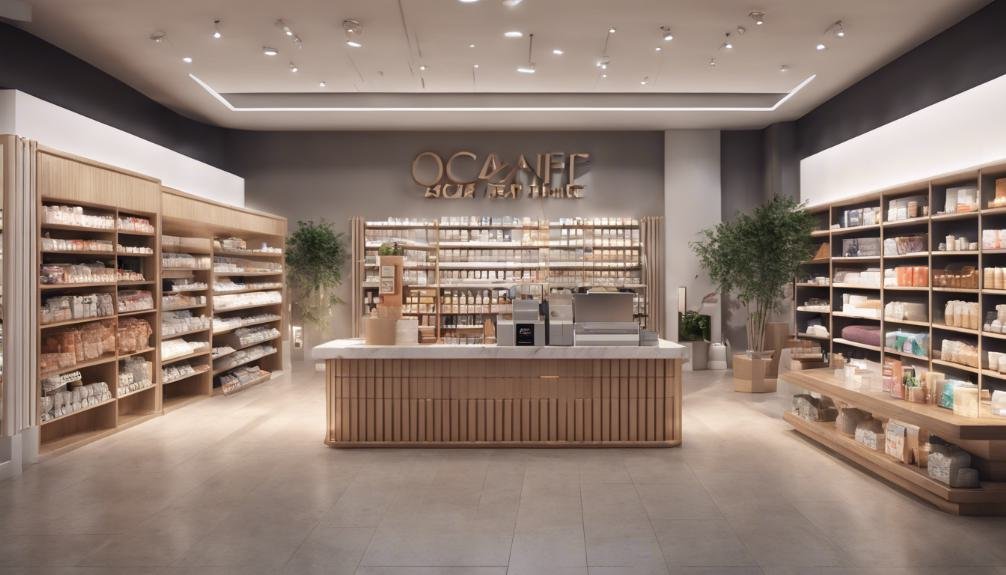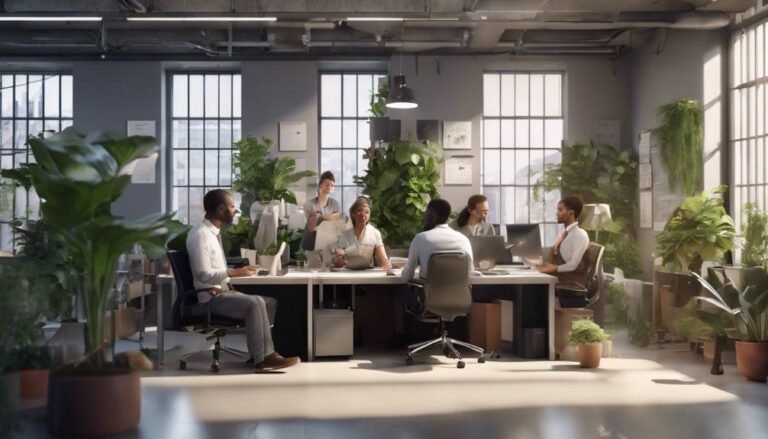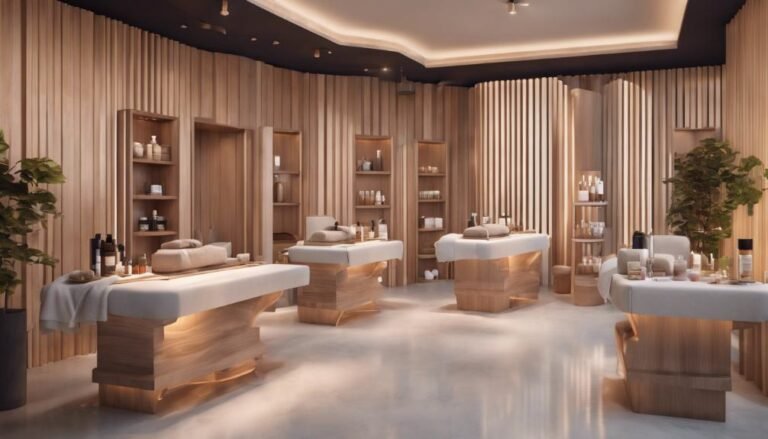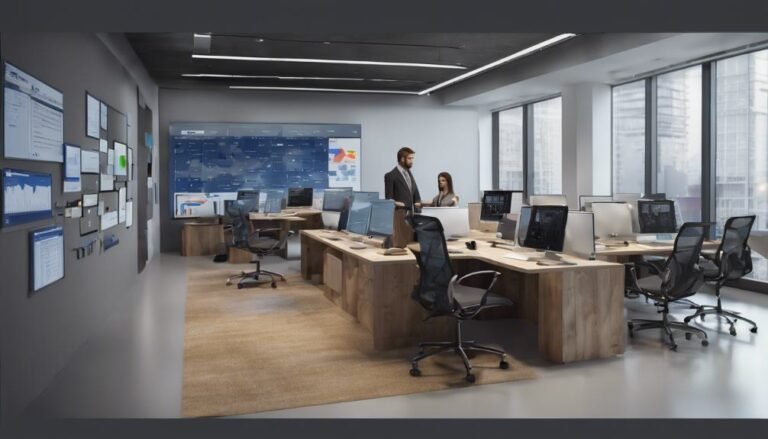Opening a Retail Store: Tips and Tricks
When opening a retail store, meticulously analyze your location, understand your target audience, design an engaging store layout, develop a strong brand identity, manage inventory efficiently, implement effective marketing tactics, and prioritize exceptional customer service. Carefully select a location based on foot traffic, customer demographics, and brand fit. Tailor your products and marketing to appeal to your audience. Maximize customer engagement with strategic store layouts and visually appealing displays. Ensure brand consistency and uniqueness. Streamline inventory management and utilize inventive marketing strategies. Provide exceptional service through personalization and problem-solving. These core tips set the foundation for a successful retail venture.
Key Takeaways
- Conduct thorough location analysis to ensure visibility and accessibility.
- Differentiate store with a unique selling proposition.
- Design store layout to enhance customer engagement and traffic flow.
- Implement effective inventory management strategies for efficiency.
- Prioritize exceptional customer service to build loyalty and satisfaction.
Location Matters
Selecting the right location for your retail store is essential for attracting customers and maximizing sales potential. Conducting a thorough location analysis is vital to guarantee the success of your business.
Begin by researching the area's foot traffic, visibility, and accessibility. Look into the demographic study of the neighborhood to understand the age, income level, lifestyle, and shopping habits of the residents. This information will help you tailor your products and marketing strategies to meet the specific needs of your target audience.
When analyzing potential locations, consider factors such as proximity to competitors, parking availability, and overall safety of the area. Choose a location that aligns with your brand image and values while also being convenient for your customers to reach.
Remember that a well-selected location can have a significant impact on your store's performance and overall profitability. By investing time and effort into location analysis and demographic study, you can position your retail store for long-term success.
Know Your Target Audience
To successfully open a retail store, it's essential to know your target audience inside and out. Market research will help you understand their preferences, behaviors, and needs.
Market Research Importance
Understanding your target audience is vital when opening a retail store, as it directly influences your business's success. Conducting thorough market research, including competitor analysis and studying demographic trends, is essential.
Competitor analysis helps you identify your competitors, understand their strengths and weaknesses, and pinpoint gaps in the market that you can capitalize on. By knowing your competitors, you can differentiate your store and create a unique selling proposition that appeals to your target audience.
Demographic trends play a significant role in shaping consumer behavior. By analyzing demographic data such as age, gender, income level, and location, you can tailor your products, pricing, and marketing strategies to cater to the specific needs and preferences of your target audience.
Understanding the demographics of your target market allows you to create a personalized shopping experience that resonates with your customers, leading to increased brand loyalty and higher sales. Conducting thorough market research will give you valuable insights that will guide your business decisions and set you up for success in the competitive retail landscape.
Customer Profiling Strategies
Identifying the characteristics and preferences of your target audience is essential for developing effective customer profiling strategies when opening a retail store. Conducting a demographic analysis allows you to understand the basic traits of your potential customers, such as age, gender, income level, education, and occupation. This information helps you tailor your products and marketing strategies to meet the needs and expectations of your target market.
In addition to demographic analysis, implementing behavioral segmentation can further enhance your customer profiling strategies. By observing the behaviors, preferences, and buying patterns of your potential customers, you can categorize them into specific groups based on their interactions with your products or services. Understanding the motivations behind their purchasing decisions enables you to create personalized experiences that resonate with each segment, ultimately driving sales and fostering customer loyalty.
Consider the following table to organize your customer profiling strategies effectively:
| Customer Profiling Strategies | Benefits |
|---|---|
| Demographic Analysis | Understand basic traits of customers |
| Behavioral Segmentation | Categorize customers based on behaviors |
Tailor Products Effectively
By thoroughly understanding the characteristics and preferences of your target audience, you can effectively tailor your products to meet their specific needs and desires. When it comes to product display, consider arranging items in a way that appeals to your customers.
For example, if your target audience values convenience, group complementary products together for easy access. Additionally, create visually appealing displays that catch the customer's eye and encourage them to explore further.
Customer engagement is key in ensuring that your products resonate with your target audience. Encourage interaction by offering samples, demonstrations, or interactive displays. This not only increases the likelihood of a purchase but also helps you gather valuable feedback about your products.
Design a Compelling Store Layout
When designing a compelling store layout, it is crucial to focus on layout planning tips. Visual merchandising strategies and customer flow optimization are also key factors to consider. These elements play an essential role in creating an environment that attracts customers and enhances their shopping experience.
Layout Planning Tips
Crafting a compelling store layout is vital to maximizing customer engagement and facilitating a seamless shopping experience. When planning your store layout, consider the flow of traffic to guide customers through your store efficiently.
Make sure that there are no obstacles hindering movement and that popular items are strategically placed to attract attention.
To enhance traffic flow, design your layout in a way that naturally leads customers through different sections of the store. Use pathways that guide shoppers past key products and create focal points to draw them deeper into the store.
Additionally, consider the placement of high-demand items at eye level to increase visibility and encourage purchases.
Product placement is important for influencing customer behavior. Arrange products strategically by grouping complementary items together or placing higher-margin products in prime locations.
Create visually appealing displays to showcase your merchandise and encourage impulse buying. By optimizing traffic flow and product placement in your store layout, you can create a compelling shopping experience that drives sales and fosters customer satisfaction.
Visual Merchandising Strategies
To design a compelling store layout through visual merchandising strategies, focus on creating an engaging and aesthetically pleasing environment that captivates customers from the moment they step inside.
Implement the following strategies to enhance your store's visual appeal:
- Window Displays: Utilize eye-catching window displays to attract passersby and entice them to enter your store. Rotate these displays regularly to keep them fresh and exciting.
- Product Placement: Arrange products strategically to guide customers through the store and encourage exploration. Highlight featured items or promotions in prime locations to drive sales.
- Signage Design: Use clear and creative signage to help customers navigate your store effortlessly. Incorporate branding elements and include informative signs to educate shoppers about products or promotions.
- Lighting Techniques: Experiment with different lighting options to create the desired ambiance in your store. Use a mix of ambient, accent, and task lighting to showcase products effectively and set the mood for shoppers.
Customer Flow Optimization
Enhance the shopping experience in your retail store by strategically optimizing customer flow through a well-designed and compelling store layout. When planning your store layout, consider the traffic flow to guide customers smoothly through the store.
Start by placing your high-demand products towards the back of the store to draw customers deeper inside, increasing the chance of them browsing other items along the way. Create designated pathways that lead customers to different sections, ensuring they explore the entirety of your offerings.
Customer engagement is key in optimizing flow. Incorporate interactive displays or demo stations strategically throughout the store to keep customers engaged and encourage longer browsing times. Consider the overall ambiance of the store; lighting and music can influence how customers move through the space.
Product placement is essential for guiding customers seamlessly through the store. Use focal points like feature displays or eye-catching signage to direct attention to specific areas. Make sure that products are well-organized and clearly labeled to facilitate easy navigation.
Develop a Strong Brand Identity
Establishing a distinctive brand identity is crucial for your retail store's success. Your brand is the face of your business, representing its values, mission, and what sets it apart from competitors.
To build a strong brand identity, focus on brand consistency and unique positioning.
Here are four key strategies to help you develop a compelling brand identity:
- Brand Consistency: Guarantee that your brand elements such as logo, colors, fonts, and messaging are consistent across all touchpoints, including signage, packaging, and online platforms.
- Unique Positioning: Identify what makes your store unique in the market. Highlight these unique selling points in your branding to stand out from the competition.
- Customer Experience: Tailor your brand identity to create a memorable and positive customer experience. From store layout to employee interactions, every aspect should reflect your brand values.
- Community Engagement: Engage with your local community to strengthen your brand identity. Sponsor events, collaborate with other businesses, and support causes that resonate with your brand values.
Inventory Management Strategies
Developing an efficient inventory management system is essential for the smooth operation of your retail store. To streamline your supply chain and guarantee excellent stock control, consider implementing these strategies.
First, establish clear procedures for receiving and recording incoming inventory. Utilize technology such as barcode scanners to accurately track items and update your system in real-time. Regularly conduct thorough stock audits to identify any discrepancies and address them promptly to prevent stockouts or overstock situations.
Another vital aspect of inventory management is forecasting demand. Analyze sales data and trends to predict which products are likely to perform well, allowing you to adjust your ordering quantities accordingly. Utilize inventory management software to automate replenishment orders and set reorder points to prevent running out of popular items. Additionally, categorize your products based on their turnover rate to prioritize restocking efforts efficiently.
Implement Effective Marketing Tactics
To drive foot traffic and boost sales in your retail store, implementing effective marketing tactics is key. Here are some practical tips to help you make the most of your marketing efforts:
- Utilize Social Media Platforms:
Create engaging posts on platforms like Instagram, Facebook, and Twitter to showcase your products and promotions. Interact with your audience and use targeted ads to reach potential customers.
- Implement Email Marketing Campaigns:
Build an email list of customers and send out regular newsletters with updates, promotions, and exclusive offers. Personalize your emails to make them more engaging.
- Host In-Store Events:
Organize events like product launches, workshops, or sales to attract customers to your store. Promote these events through social media and email marketing to generate interest.
- Collaborate with Influencers:
Partner with influencers in your niche to reach a broader audience. Influencers can help promote your products to their followers, increasing brand awareness and driving traffic to your store.
Provide Exceptional Customer Service
Enhance customer satisfaction by prioritizing exceptional service in every interaction at your retail store.
Communication skills are key in providing outstanding customer service. Train your staff to actively listen to customers, ask probing questions to understand their needs, and communicate clearly and effectively.
Encourage problem-solving by empowering your employees to make decisions that benefit the customer and the business.
Personalization is another vital aspect of exceptional customer service. Encourage your team to remember regular customers' preferences and purchase history. A personalized approach can make customers feel valued and build loyalty.
Additionally, follow-up with customers after their purchase to confirm satisfaction and address any concerns they may have. This shows that you care about their experience and are committed to providing excellent service.
Monitor and Adjust for Success
To guarantee the continued success of your retail store, regularly monitor key performance indicators and be prepared to make adjustments as needed to optimize operations and enhance profitability.
Here are four essential strategies to help you monitor and adjust for success:
- Sales Tracking: Implement a robust system to track daily, weekly, and monthly sales performance. Analyze trends, identify peak sales periods, and assess which products are driving revenue to make informed decisions.
- Competition Analysis: Keep a close eye on your competitors. Study their pricing strategies, product offerings, and marketing tactics. Use this information to differentiate your store, capitalize on gaps in the market, and stay ahead of the competition.
- Customer Feedback: Actively seek and listen to customer feedback. Use surveys, reviews, and direct interactions to understand customer preferences, pain points, and suggestions for improvement. Adjust your store operations based on this valuable input.
- Inventory Management: Regularly review your inventory levels and adjust orders based on sales data and seasonal trends. Avoid overstocking or understocking products to maintain a healthy cash flow and meet customer demand effectively.
Conclusion
To sum up, launching a retail store requires meticulous planning and attention to detail. Remember, the devil is in the details, so ensure you have a strong location, understand your audience, create a compelling layout, and establish a strong brand identity.
Keep a close eye on your inventory, utilize effective marketing tactics, provide excellent customer service, and be prepared to adapt and evolve as necessary. With the right strategy and mindset, your retail store can thrive and succeed in the competitive market.








